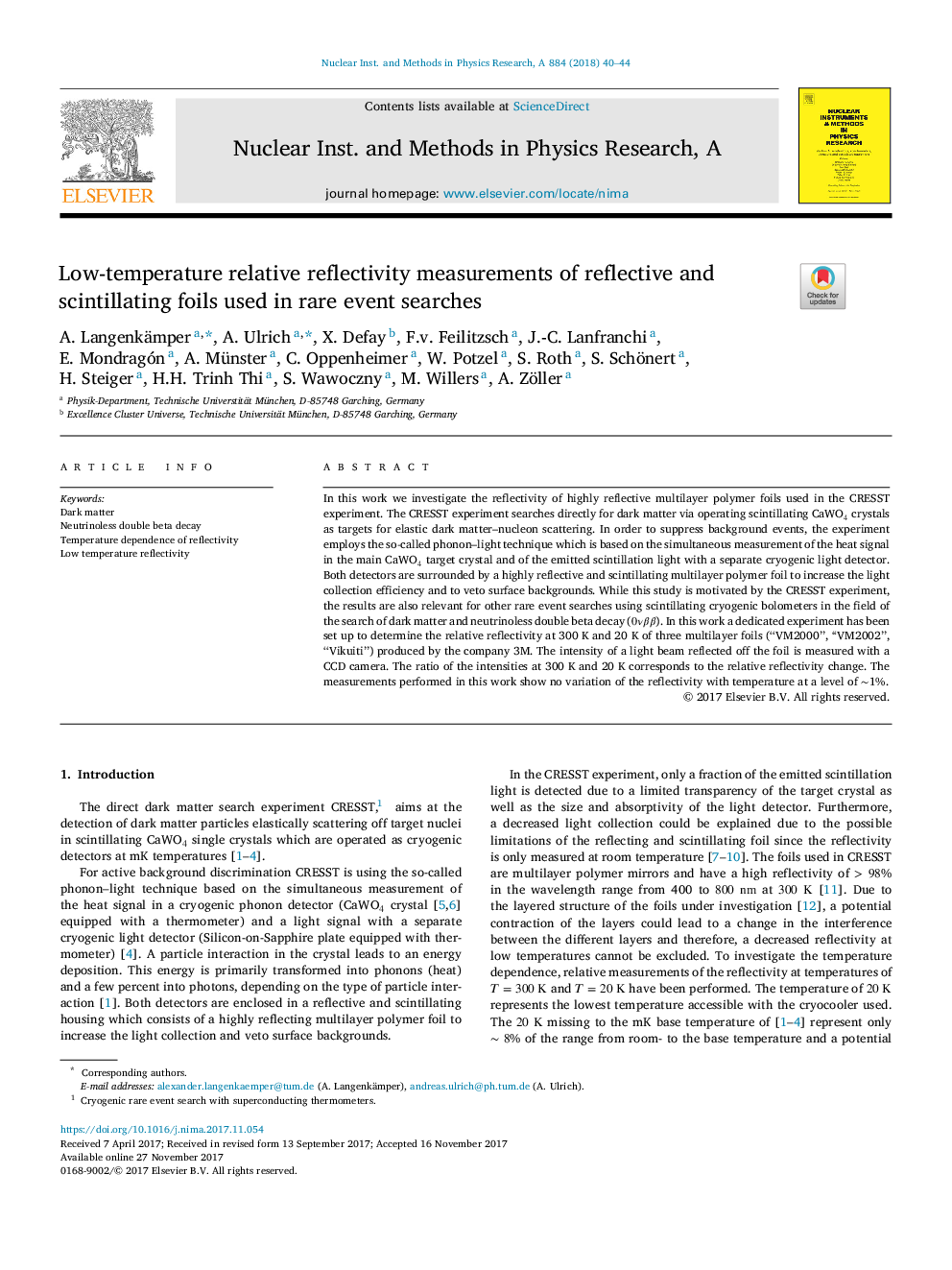| Article ID | Journal | Published Year | Pages | File Type |
|---|---|---|---|---|
| 8166936 | Nuclear Instruments and Methods in Physics Research Section A: Accelerators, Spectrometers, Detectors and Associated Equipment | 2018 | 5 Pages |
Abstract
In this work we investigate the reflectivity of highly reflective multilayer polymer foils used in the CRESST experiment. The CRESST experiment searches directly for dark matter via operating scintillating CaWO4 crystals as targets for elastic dark matter-nucleon scattering. In order to suppress background events, the experiment employs the so-called phonon-light technique which is based on the simultaneous measurement of the heat signal in the main CaWO4 target crystal and of the emitted scintillation light with a separate cryogenic light detector. Both detectors are surrounded by a highly reflective and scintillating multilayer polymer foil to increase the light collection efficiency and to veto surface backgrounds. While this study is motivated by the CRESST experiment, the results are also relevant for other rare event searches using scintillating cryogenic bolometers in the field of the search of dark matter and neutrinoless double beta decay (0νββ). In this work a dedicated experiment has been set up to determine the relative reflectivity at 300 K and 20 K of three multilayer foils (“VM2000”, “VM2002”, “Vikuiti”) produced by the company 3M. The intensity of a light beam reflected off the foil is measured with a CCD camera. The ratio of the intensities at 300 K and 20 K corresponds to the relative reflectivity change. The measurements performed in this work show no variation of the reflectivity with temperature at a level of â¼1%.
Related Topics
Physical Sciences and Engineering
Physics and Astronomy
Instrumentation
Authors
A. Langenkämper, A. Ulrich, X. Defay, F.v. Feilitzsch, J.-C. Lanfranchi, E. Mondragón, A. Münster, C. Oppenheimer, W. Potzel, S. Roth, S. Schönert, H. Steiger, H.H. Trinh Thi, S. Wawoczny, M. Willers, A. Zöller,
